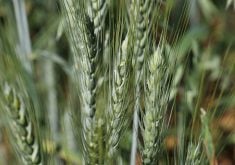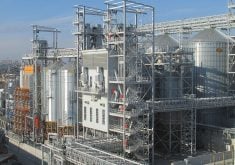MINNEAPOLIS, Minn. — Brazilian soybean farmers are making money hand over fist.
Growers are expected to average $117 of profit per acre in 2015-16. The profit is the margin over costs, but land rent costs were not included in the calculation.
“We expect to have the largest profit on record, and that’s because of currency devaluation,” said Marcos Rubin, head of grains with Agroconsult, a Brazilian agribusiness consultancy.
The Brazilian real has depreciated 87 percent against the U.S. dollar since July 2014, which has shielded Brazilian farmers against the decline in global soybean prices.
Read Also

Short rapeseed crop may put China in a bind
Industry thinks China’s rapeseed crop is way smaller than the official government estimate. The country’s canola imports will also be down, so there will be a lot of unmet demand.
In domestic currency, soybean prices are down 10 percent in the U.S. since September 2014 and down 22 percent in Argentina. However, they are up 24 percent in Brazil.
“It has been two years that the North American farmer has price decreases and the Brazilian soybean farmer has price increases,” Rubin told the recent Oilseed & Grain Trade Summit.
Brazil’s soybean farmers have been making huge profits since 2010-11, which has allowed them to pay down debt.
However, 40 percent of their crop inputs are paid for in U.S. dollars, which means the expense side of the ledger has been also increasing.
Rubin said the country’s growers will pay an estimated $36 billion to seed this year’s soybean, corn, cotton and wheat crops, up from $28 billion last year.
“They make more money but at the same time they need more money now to keep the farm running. They need cash flow to plant,” he said.
The problem is Brazil is in the midst of a financial crisis, and credit availability is restricted. Farmers are reinvesting their profits and taking out government loans, but they can’t get any more money from financial institutions.
There would be a huge surge in Brazilian soybean acres if it weren’t for the credit issue. Instead, Agroconsult is forecasting a modest 2.5 million acre increase.
Yields are expected to be good because of a strong El Nino weather event, which should provide plentiful rain for drought-prone states in southern Brazil.
Agroconsult sees a record 100 million tonnes of Brazilian soybean production, up slightly from last year.
Rubin said it is a conservative estimate that could easily rise by as much as four million tonnes.
Farmers in neighbouring Argentina are expected to plant 52 million acres of soybeans, up three percent from last year.
Yields in Argentina tend to be historically high during El Nino years.
Agroconsult is forecasting 59.2 million tonnes of production, down slightly from last year.
“I think we’re (also) being conservative on that number,” he said.
Brazilian farmers are expected to plant 14 million acres of first crop corn, which would be 7.8 percent smaller than last year and continue a trend toward smaller first crop corn plantings.
Many analysts believe the much larger safrinha, or second crop of corn, will experience the same three percent expansion as the country’s soybean crop. Rubin isn’t in that camp.
“It will grow more. It will grow much more than the soybean market,” he said.
Agroconsult sees 27 million acres of second crop corn, up more than 13 percent from year. That is expected to result in 85 million tonnes of total Brazilian corn production, which is much higher than the U.S. Department of Agriculture’s 79 million tonne estimate.
Rubin believes corn exports could be as high as 35 million tonnes compared to the USDA’s 24 million tonne estimate.
He did not provide corn production or export numbers for Argentina.















